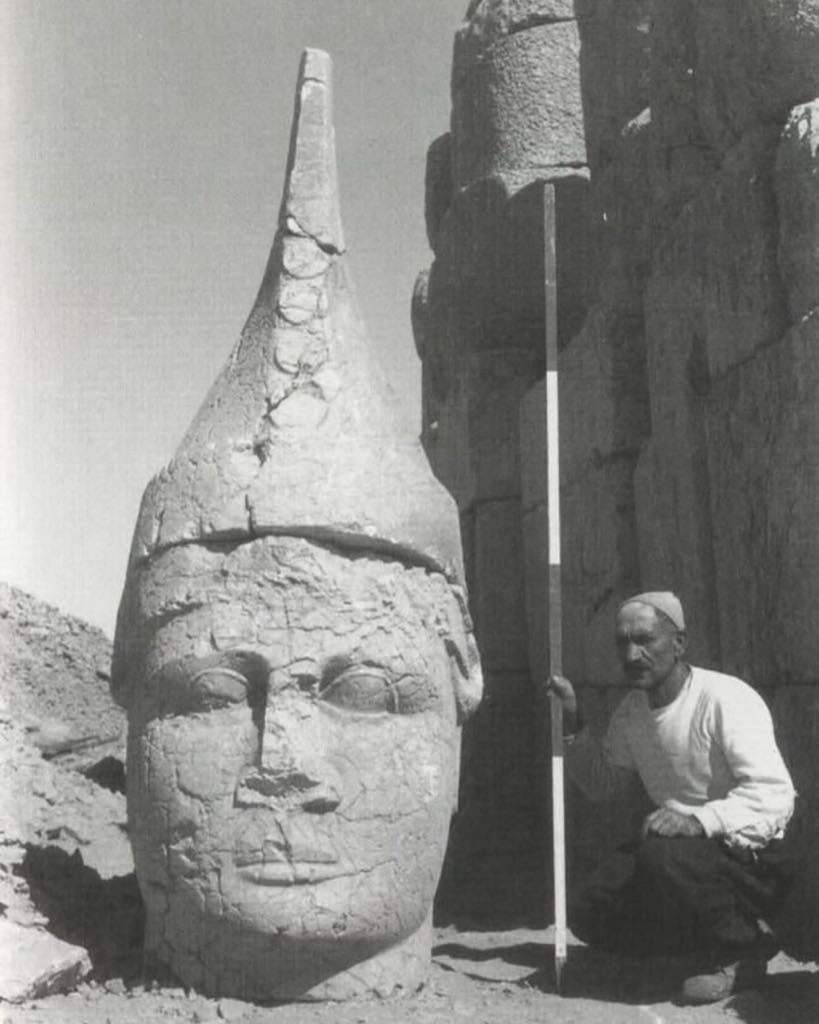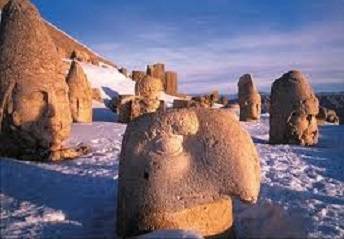
KOMA GIYA (Koma Gene)
ZÊLANÎ
KRALLIĞI
BC 70 - AD 167
The
Historical Ruins in Nimrod Montain in Kommagene
The remains of The Kurdish civilization Komoh-Komagene
(The Thrones of the Gods and Godies),
In The Kurdish City Semsour ('Adiyaman')

The historical ruins in Commagene (the thrones of the Gods and Godies), in the Kurdish city Semsour (Adiyaman) is a very popular tourist atraction
and annually thousands of people are visiting this mountain from all over the world to be able to see the amazing and magnificent color shift in the sky at sunrise and sunset.
King Antîkos of Komagene builded a tomb hill to himself on the Bêlî mountain which is known by no as Nimrud mountain. The name of Bêlî mountain i from the Kurdish tribe Bêlî. The invader Turks changed the Kurdish name to Nimrud at 1961 as they did with all original Kurdish names of ciries, villages. mountains etc. The tomb of Antikos is under this artificall hill, The name of Komagene is originated from the word Komoh which is a civilisation from BC 1700. The name of the founder of Komagene kingdom is Mitradites Kalenikos in Greek. Actually in Kurdish Mêrdatê Kal wich means old man. Merdat: man, Kal: old. If you remove the typical Greek suffix "..os" then you see the original name. Komoh-Komagene is a Kurdish kingdom. Mitrades' father is Median. Media was a Kurdish Empire. The word Komagene in Kurdish Kom: coalition, gene (giyan) all, it means Coalition of all. That time nations didn't exist. They were tribes. Those tribes which lived at Komoh, Komagene time, the are still living in this same place in Samsur in Northern Kurdistan: These tribes from Komoh-Komagene time are Reshi, Izol, Kawî, Bêzîk, Hevêt. These Kurdish tribes formed a coalition and formed the Komoh-Komagene - a state of confederation. The Kurdish tribe of Zilan, founded thrre kingdoms at the same time: Capadokia, Pontus and Komagene. All these three states are Kurdish states. For instans the Capadocia kingdom builded in the Zêl which today is called Yozgat. Zêl is the name of Zilan tribe's god Zêl. The Kurdish tribe Zilan still exist in the region.
The Bêlî mountain is 2000 meter high. The tomb hill which is built with stones is 150 meter high. There are stone stues. There are stone statues there. The statue of Antiko is among them. Antikos wife Ladiks statue also is there. Apollons statue. The name of the gods of this kingdom all are in Kurdish. For instans Arjend whic is spelled as Arjende. Because ther is no the sound of "J" in greek it is why it spelled as Argende. It menass in Kurdish the god which giving ar (the fire) it means the gud of light (sun). Another god is Dê. In Kurdish mother. The god Zel. In Kurdistans there are still many places in this name: Zêö Spring and Zêl valley in Samsur, Zêl mountain in Dersim.
Lion and eagle is the symol of the kingdom of Komoh-Komagene.
The antique Kurds worshiped the sun and the religion was called Mitra.

Kürd medeniyeti tarihi, arap-islamcılığı ile inkar edilmeye ve türk islamcılığı ile de imha edilmeye başlandı.
Zêlanî Pontus Krallığı bir Kürd Krallığı'dır. Bu konuda yapılan birçok doktora tezleri olduğu gibi pek çokta belge mevcuttur.

The historical ruins in Commagene (the thrones of the Gods and Godies), in the Kurdish city Semsour (Adiyaman)
"M. Ö 300'e kadar Kürtler toplu halde (birliktelik) bir çok komşu bölgede egemen olup yerleşim yerlerini genişlettiler.
Kommagene, Media ve Adiabene gibi Kürt Krallıkları, Roma yayılmacılığına direnen Part federasyonuna katıldılar."
J. Campbell, 1997
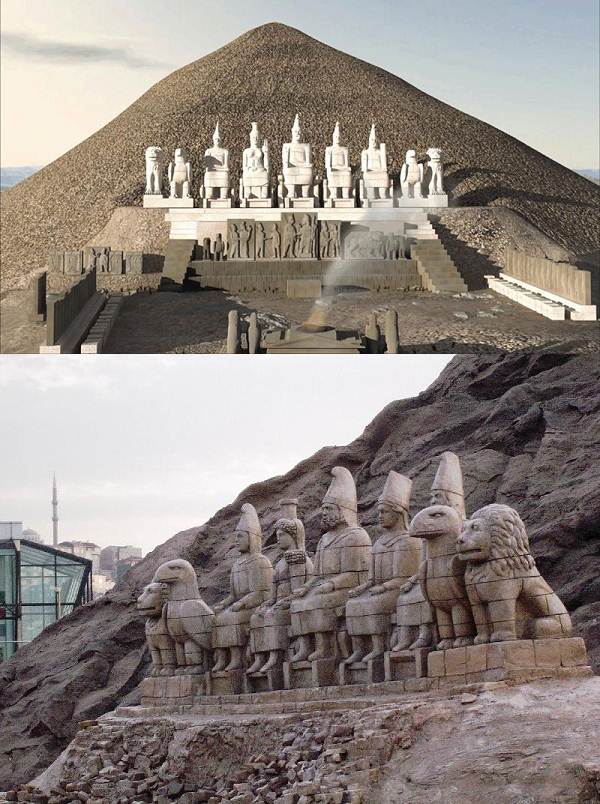

The historical ruins in Commagene (the thrones of the Gods and Godies), in the Kurdish city Semsour (Adiyaman)
Kürdler, lanetli İngiliz, fransız ve alman emperyalizmi tarafından inkar edilen ve ortadan kaldırılan kürd halkının tarihini YENİDEN buluyor ve bütün sahih bilgileri tek tek yerine koyuyor.

Resimde gördüğünüz M.Ö 75 yılına ait Kürd kral .Mithridates Ermenistan kralı Tigranes'i ağırladığı anı canlandırıyor



Yokolmaya (!) terkedilmiş muhteşem kürd tarihinden muhteşem bir kalıntı

Kolage
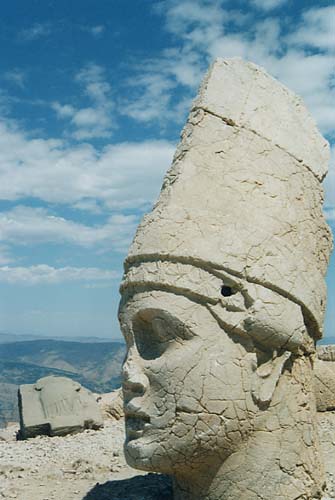
The historical ruins in Commagene (the thrones of the Gods and Godies), in the Kurdish city Semsour (Adiyaman) ©-ROXANE PHOTOS

The historical ruins in Commagene (the thrones of the Gods and Godies), in the Kurdish city Semsour (Adiyaman)
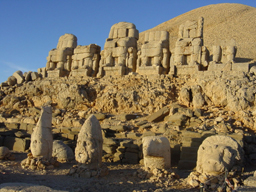
The historical ruins in Commagene (the thrones of the Gods and Godies), in the Kurdish city Semsour (Adiyaman)


The historical ruins in Kommagene (the thrones of the Gods and Godies), in the Kurdish city Semsour (Adiyaman)

The historical ruins in Kommagene (the thrones of the Gods and Godies), in the Kurdish city (Adiyaman) ©-ROXANE PHOTOS

The head of King Antiochus I in the Antep Muzeum of Archeology

The historical ruins in Kommagene (the thrones of the Gods and Godies), in the Kurdish city Semsour (Adiyaman)


Millions tourists both from abroad and inside of country visiting Kurdistan to see this fabulous colorful sun bims at dawn and sunset in Komagene

The historical ruins in Kommagene (the thrones of the Gods and Godies), in the Kurdish city Semsour (Adiyaman)
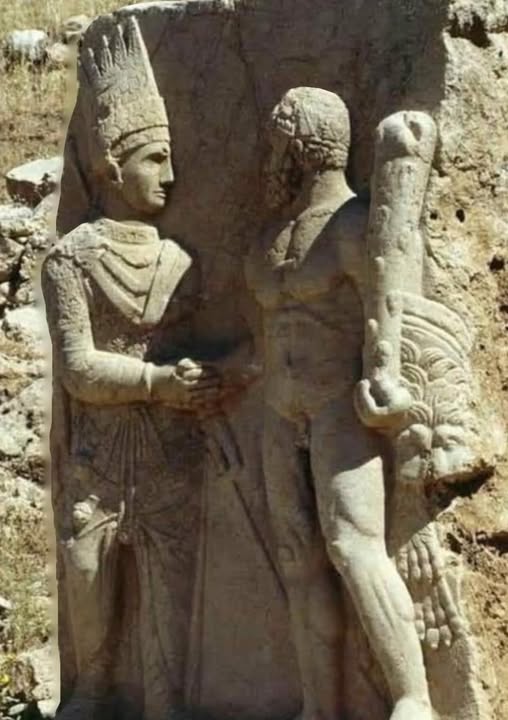
The historical ruins in Kommagene (the thrones of the Gods and Godies), in the Kurdish city Semsour (Adiyaman)
Kommagene Krallığı
Kommagene Kralı I. Antiochus'un Arsameia'da Herakles'le el sıkıştığını gösteren taş kabartma. Antiochus kendisini tanrı Herakles'ten daha uzun gösterirken, profilden elini Herakles'in üzerinde göstermiştir. |







The historical ruins in Kommagene (the thrones of the Gods and Godies), in the Kurdish city Semsour (Adiyaman)

The historical ruins in Kommagene (the thrones of the Gods and Godies), in the Kurdish city Semsour (Adiyaman)

 |



İşgalci tükler küerd tarihinin yıkılması, yok olması için özel çaba göstermektedir




Kurdên berfiratî (Semsûr, Xarput-Mazra, Meleti, Dilûk) vê kum, kofî û kolozê hîna jî bi kar dihênin.

Adetên îslamê nehişt ku kurd adetên xwe berdewam bikin. Loma dirûb û tîpa kurdan vê dawiyê guherî û kurd êdî li bav û kalên xwe nediçûn!
Adetên îslamê ne hişt ku kurd êdî xeml girêbidin. Îro tenê kurdên êzidî li bav û kalê xwe diçin.

Kürd medeniyeti tarihi, arap-islamcılığı ile inkar edilmeye ve türk islamcılığı ile de imha edilmeye başlandı.
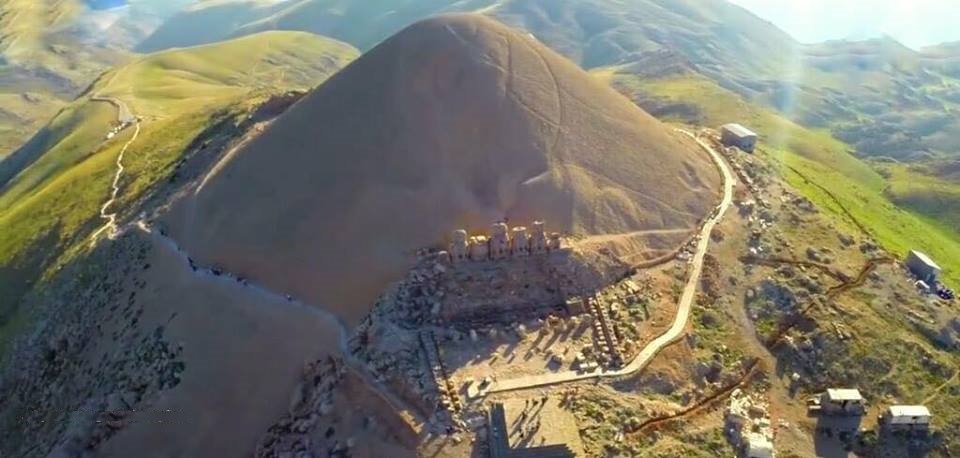

Kürdlerin tarihi olduğu için mahsusen koruma altına almıyor işgalci-inkarcı türk devleti. Yoksa her eser konservelenmiş ve bütün alanın üstü çoktan örtülmüştü.

Semsur'un (Adıyaman'ın) Kahta İlçesi'nde yer alan Karakuş Tümülüsü, Kommagene Krallık Ailesi kadınlarına ait bir anıt mezar.
Adı, güneyinde dikili olan sütun üzerindeki kartal heykelinden geliyor.
Yöre halkı tarafından "karakuş" olarak anılmasıyla literatüre bu isimle girmiş.
Tümülüsün batısında Kommagene Kralı I. Antiochos'un oğlu Kral II. Mithridates'in (MÖ 36-20), kız kardeşi Laodike ile tokalaşma kabartması yer alıyor.
Sütun üzerindeki yazıttan anlaşıldığı üzere anıt mezar, Kral Antiochos'un eşi İsias, kızı Antiochis ve torunu Aka'ya ait.


Zaze M.

Zaze M.















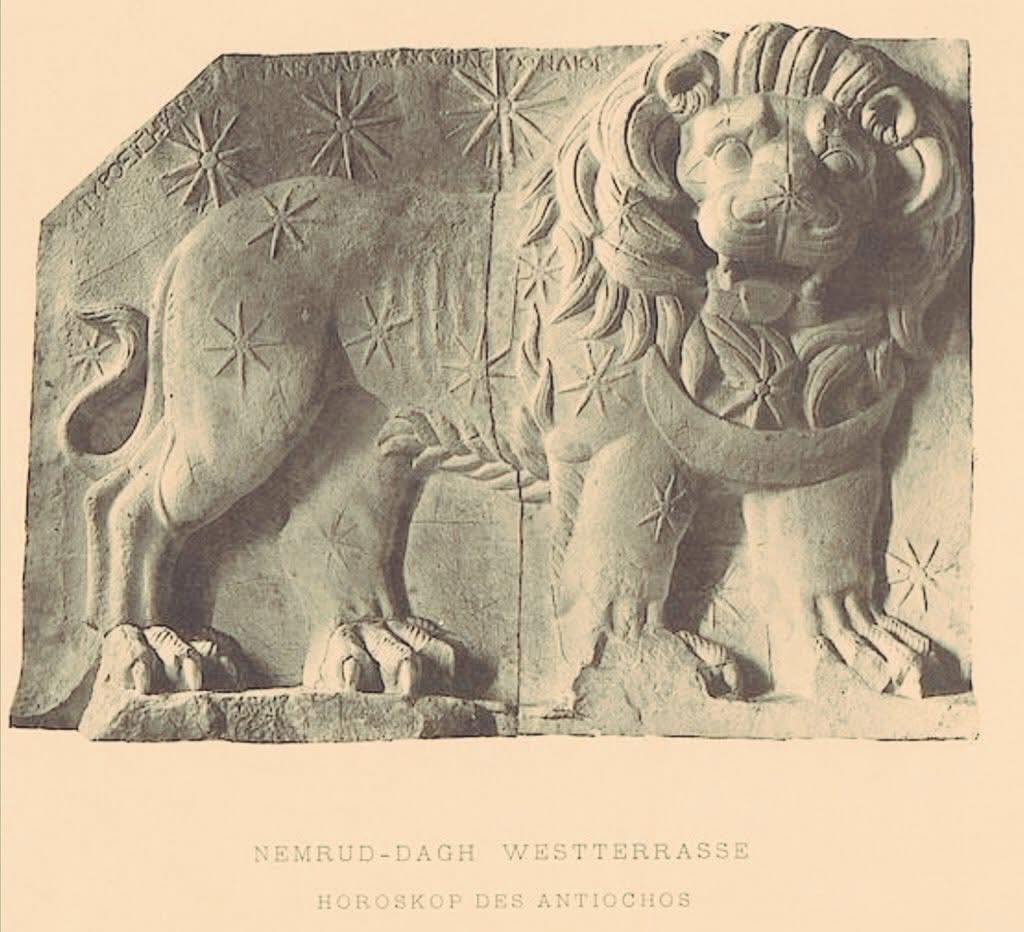
Peykerê Şêr ku di lêkolînên li Çiyayê Nemrûdê li bakurê Kurdistanê yên salên 1890 û 1900an de hatiye dîtin.



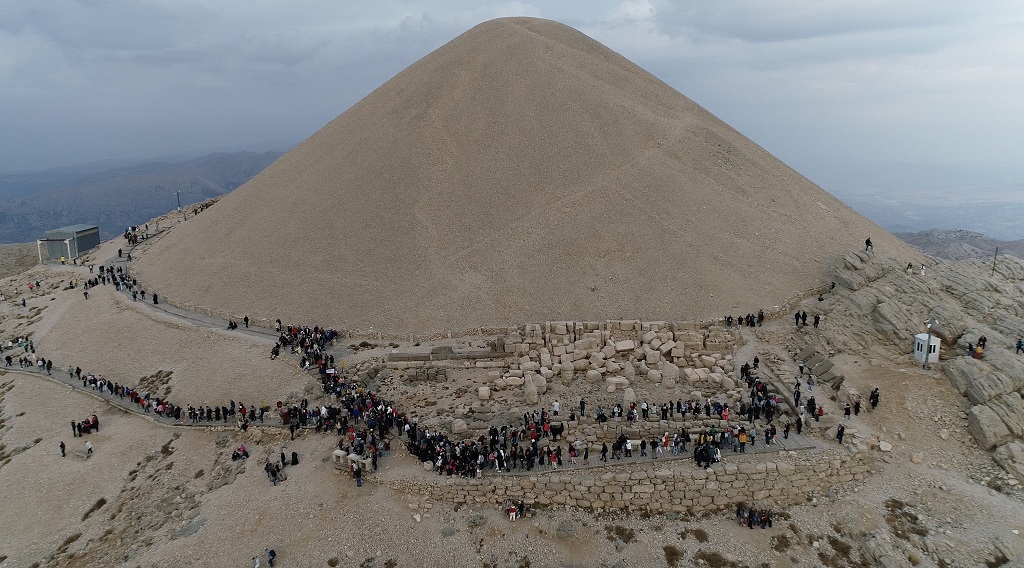

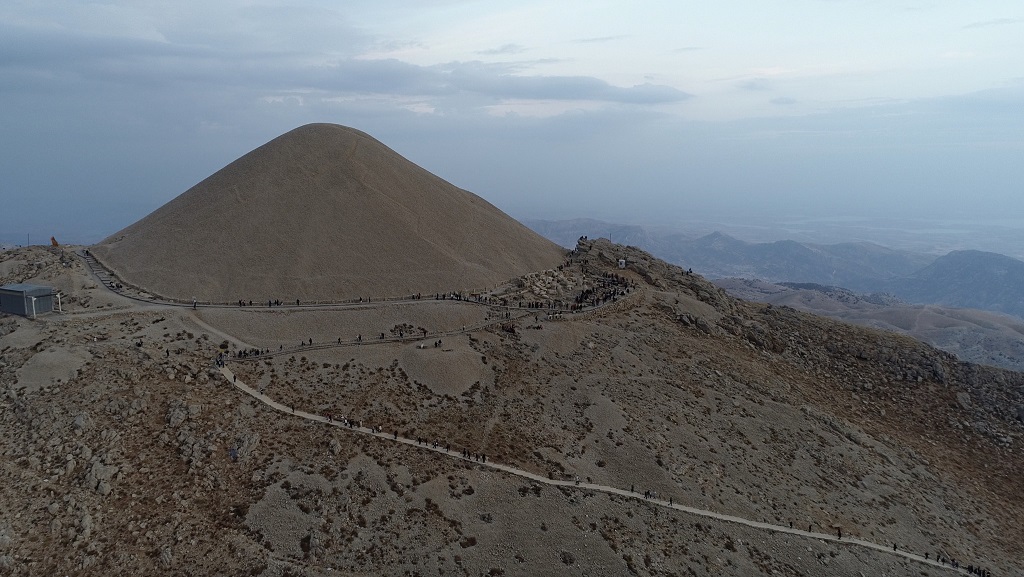




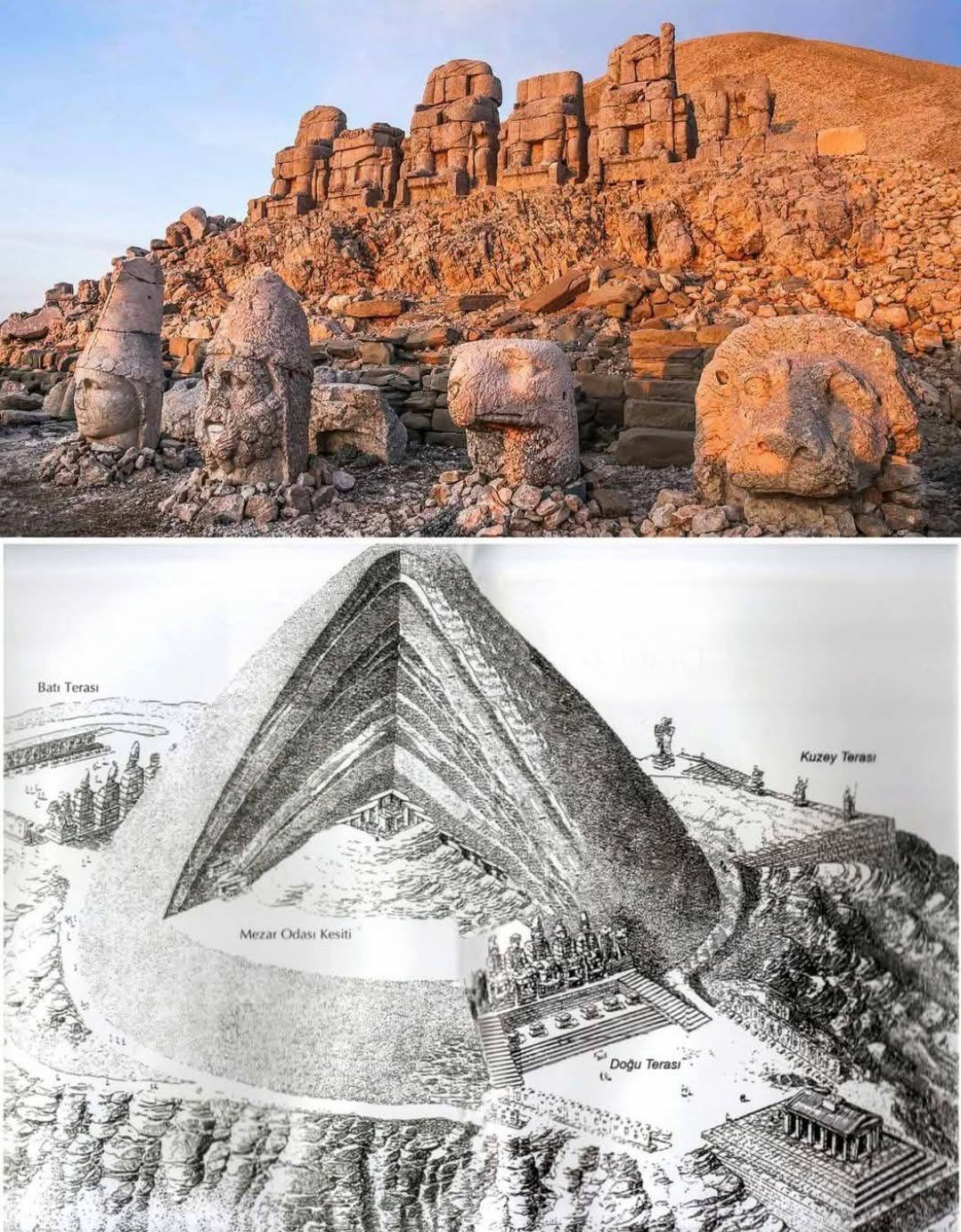
Nemrut Dağının içerisindeki gizem
Tüneller ve Gizli Geçitler: Dağın içerisinde kayalara oyulmuş tüneller ve odalar olduğu bilinir, ancak bunların amacı net değildir. Bazıları dini ritüeller için, bazıları mezar koruması için kullanıldığını öne sürer. Bu tünellerin daha derinlere uzanıp uzanmadığı veya başka gizli alanlara bağlanıp bağlanmadığı hâlâ bir sır. Efsaneler ve Spekülasyonlar: Yerel halk arasında ve popüler kültürde, Nemrut Dağının içinde gizli hazineler, kayıp odalar (Kürdçe: Şargeh) veya hatta mistik/uzaylı bağlantıları gibi iddialar dolaşır. Ancak bu tür hikayeler bilimsel bir temele dayanmaz ve daha çok efsane kategorisindedir. Astrolojik ve Mimari Sırlar: Dağın yüzeyindeki heykeller ve kabartmalar, özellikle batı terasındaki aslan horoskop kabartması, astrolojik bir anlam taşır. Bu kabartma, M.Ö. 62 yılında Antiochosun tahta çıkışını simgeler ve gökyüzünün o anki durumunu yansıtır. Bu, Kommagene Krallığının gökbilim ve mimarideki ileri bilgisini gösterir, ancak tümülüsün içindeki düzenlemelerin ne kadar karmaşık olduğu hâlâ bilinmez. Teknolojik Zorluklar: Tümülüsün taş yığını, içerideki yapıyı tahrip etmeden kazmayı zorlaştırıyor. Gelişmiş teknolojiler (örneğin, yer radarı) kullanılsa da kesin sonuçlar alınamamış. |

The Kurdish Outlaw's Captive by Rosalyn A. Kendrick
Katherine Lassiter, the beautiful young fiancee of history professor Frank Rymer, joins him on an expedition to eastern Anatolia [''Turkey''] in search of the tomb of King Antiochus of Commagene. Unknown to Katherine, Frank has become involved with some very unsavoury people, including ex-Colonel Hakan, celebrity Russian psychic Natasha Metz, and the "overlord" of the region - Agha Tariq Murat - a man who persecutes the villagers he "owns," most notably the family of Black Orhan, a local hero and an outlawed man. Orhan is on a mission to avenge the murder of his nephew when he discovers Frank has a lovely silver-haired fiancee. Initially hoping to use her to get to Frank, a powerful attraction grows between them as a secret relationship develops, leading Katherine to make some unpleasant discoveries. When the intensely passionate Orhan demands she leave Frank and become his woman, Katherine finds herself in a difficult and dangerous position. Will her heart overcome her good sense?
Rosalyn A. Kendrick (b.1942) grew up in Southeast London and moved to Hull, UK, to study theology at Hull University in 1960. She taught religious studies in inner-city secondary schools until 1996. A few days after "retiring," she went to lecture at an Islamic academy in war-torn Bosnia. She has been a visiting lecturer in many countries, from the Middle East to Singapore, Pakistan, throughout Europe, and in America and Canada. Her first book came out in 1977, and she now has a list of some 40 books, mainly on Islamic subjects, although she has continued to write novels and poetry. Publisher's website: http: //sbprabooks.com/ RosalynAKendrick"
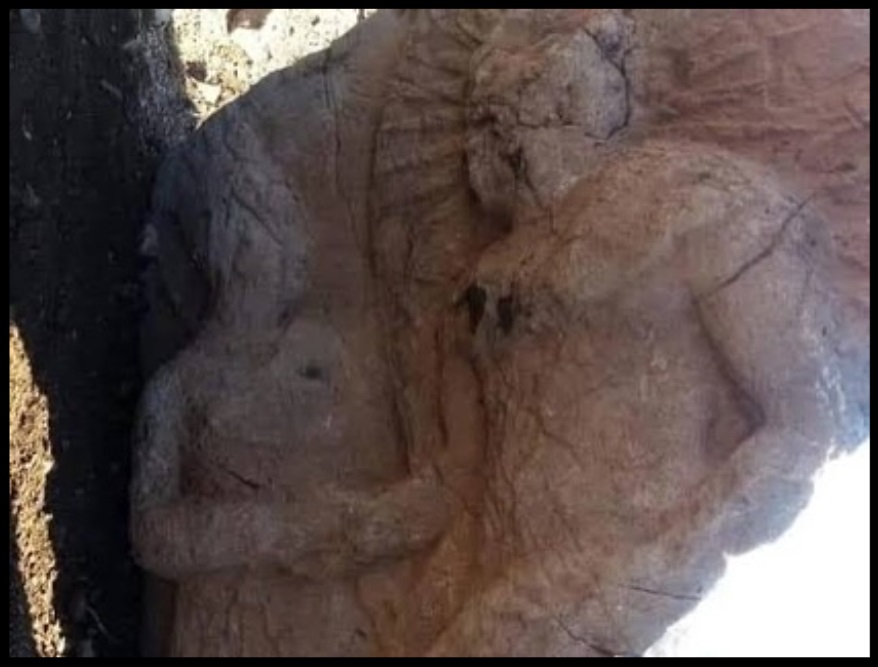
Berhemen mêjûyî yên li Çiyayê QIMIL
Kommagene Krallığının İlk İbadet Yeri: Kımıl Dağı
Semsûrın Gerger ilçesi sınırlarında yer alan Kımıl Dağı, Fırat Nehrine yakın konumuyla hem doğal güzellikleri hem de tarihî önemiyle dikkat çeker.
Nemrut Dağındaki Tümülüsün yapımına örnek teşkil eden Kımıl Dağı, Kommagene Krallığının ilk ibadet alanı olarak kabul edilmektedir.
Nemrut Dağından daha yüksek olan bu dağın yamaçlarında çok sayıda kaide ve tarihî eser bulunmuştur. Ne yazık ki bu eserlerin büyük bir kısmı
zamanla defineciler tarafından tahrip edilmiştir. Ancak sağlam kalan bir tokalaşma steli ile bir yazıt, bölgeden alınarak
bugün Adıyamandaki Perre Antik Kentinde sergilenmektedir.
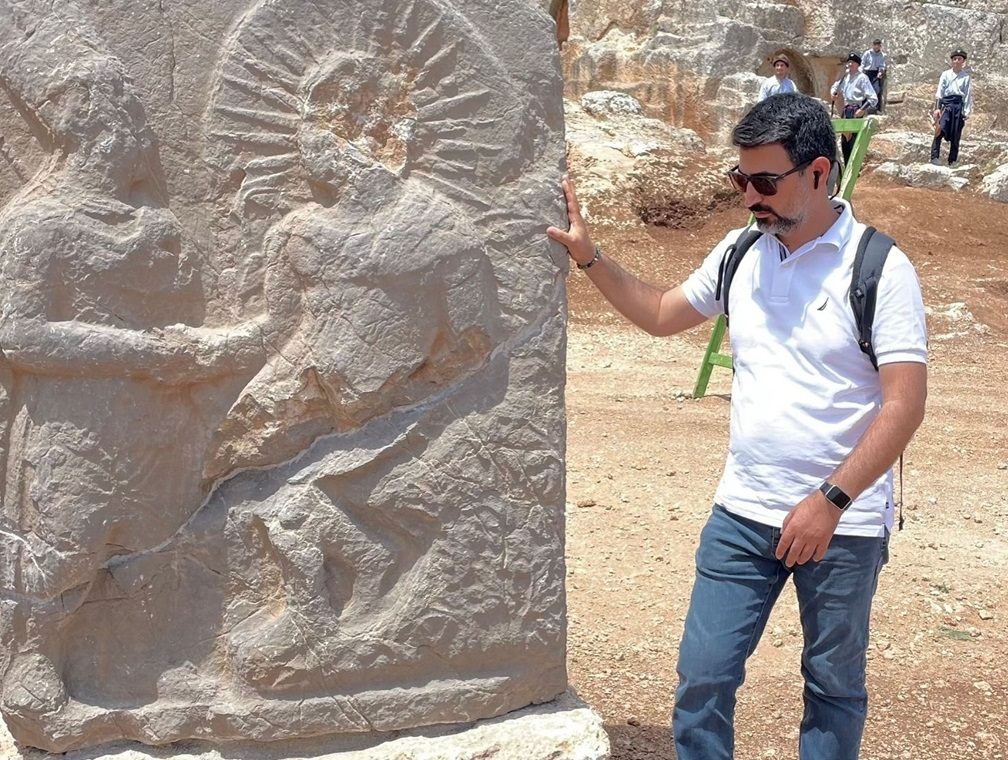
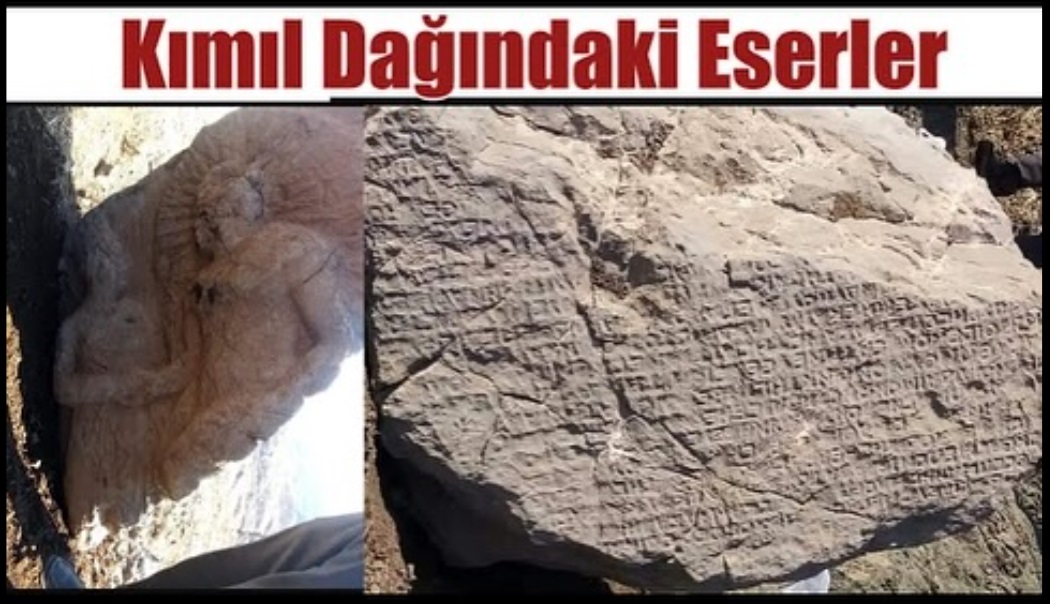
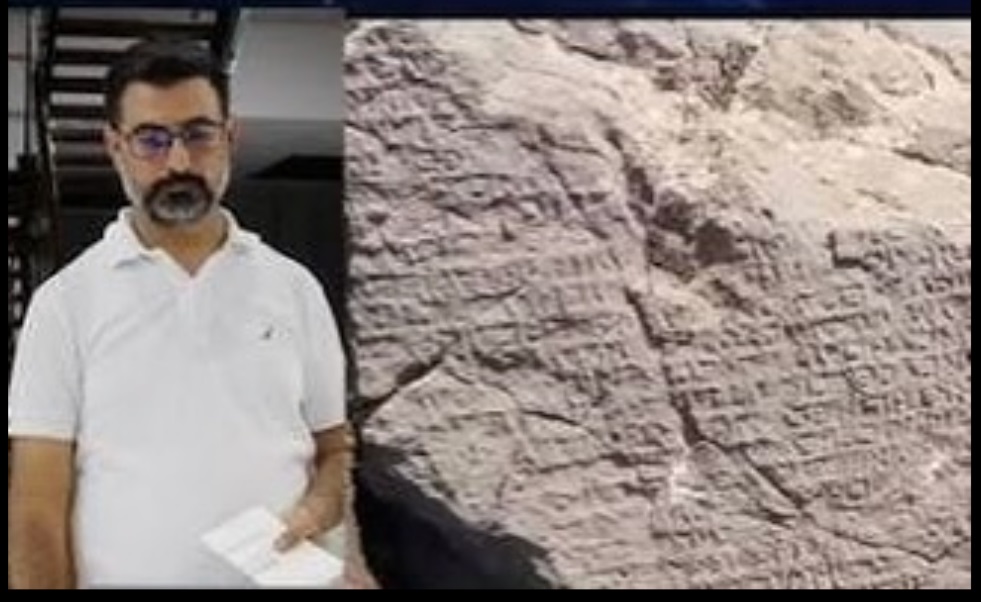


Peykerê Şêr ku di lêkolînên li Çiyayê Nemrûdê li bakurê Kurdistanê yên salên 1890 û 1900an de hatiye dîtin.

Semsûr ("Adiyaman"), Komegene Krallığına ait 2000 yıl öncesine ait Karakuş Tümülüsünde elektronik dalgalarla yapılan çalışmalar sonucu, içeride
Kral II. Ailesindeki kadınlara ait mezarlar bulunduğu açıklanmıştır.
Üç kadın mezarının ll. Mitriadesin annesi; İsias, kızkardeşi Antiokias ve onun kızı Aka'ya ait olduğu açıklandı...


Karia/Karya antik medeniyeti alfabesi, şimdiki Bodrum civarında Halikarnasos şehir devleti kurulmuş ve bu yazı tableti her ne kadar greek alfabesi formatında görünse de,
greek alfabesi
değil. Görünen
o ki greekler yazı stilini, alfabeyi halikarnasoslardan almış.
Sonra halikarnasosça ve greekçe arasında büyük bir fark var. Konuşma ve anlam aynı değil.
Hint Avrupa dili olsa bile, greekçe'ye yakın bir dil olmadığı kabul ediliyor. Tıpkı Komagene medeniyeti gibi. Komagene medeniyeti'nin de greek medeniyetiyle bir ilişkisi bulunmamaktadır.
Nimrod: Naborrot, Nabonudos
Komagene and today's Kurds



Med soylu kral..
|
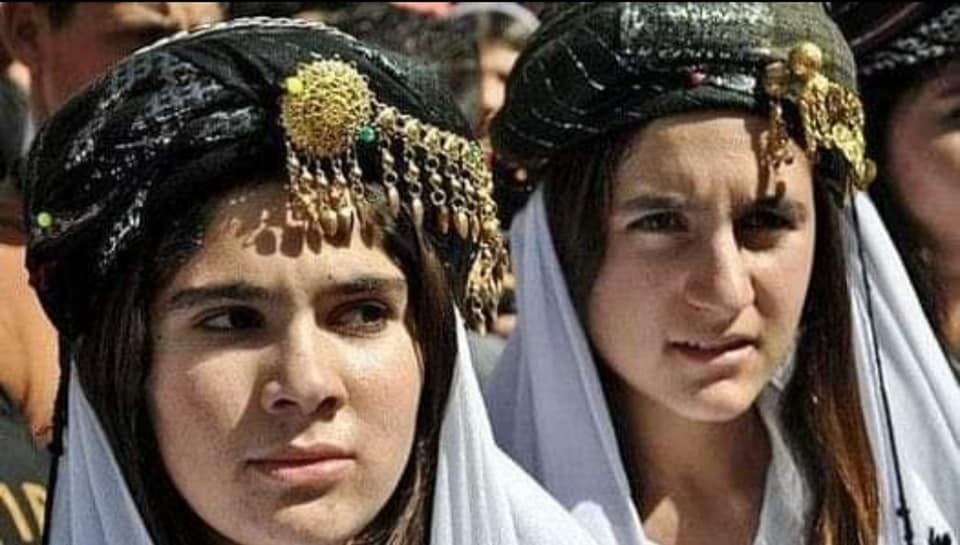
Kürd kadınlarının kullandıkları başlıklar çok çeşitli olup, başlıkların tarihi antik döneme kadar gitmektedir.
Kommagene (komajen) krallığı M.Ö. 162 M.S. 72 yılları arasında Anadolu'da bügünkü Adıyaman ili civarında Kürtler tarafından kurulmuştur. Nemrut Dağı Kürt krallığının en önemli merkezi başkentiydi. Kral Nemrud Kürt olup adıda Kürtçe'dir. Nemrud kelimesi Kürtçedeki "Nemir" veya "Nemird" kelimesinin Türkçeleşmiş şeklidir ve Ölümsüz demektir. Bu nedenleki Kendisinin heykellerini ve mimari eserlerini Nemrud Dağının tepesine kendisini Ölümsüzleştirmek için inşa ettirmiştir. Kürtlerin ataları olan Kommageneler döneminde barış ve huzur hüküm sürmüştür. Yazılı belgelerde M.Ö. 850 yılında görülen krallığın ismi o dönemde "Kummu" yada "Kummuhu" olarak geçer. Yüzyıllardır ışık anadoluya Tanrılar dağı ve Nemrud'dan doğar ve tüm Dünya uygarlığa uyanır. |

